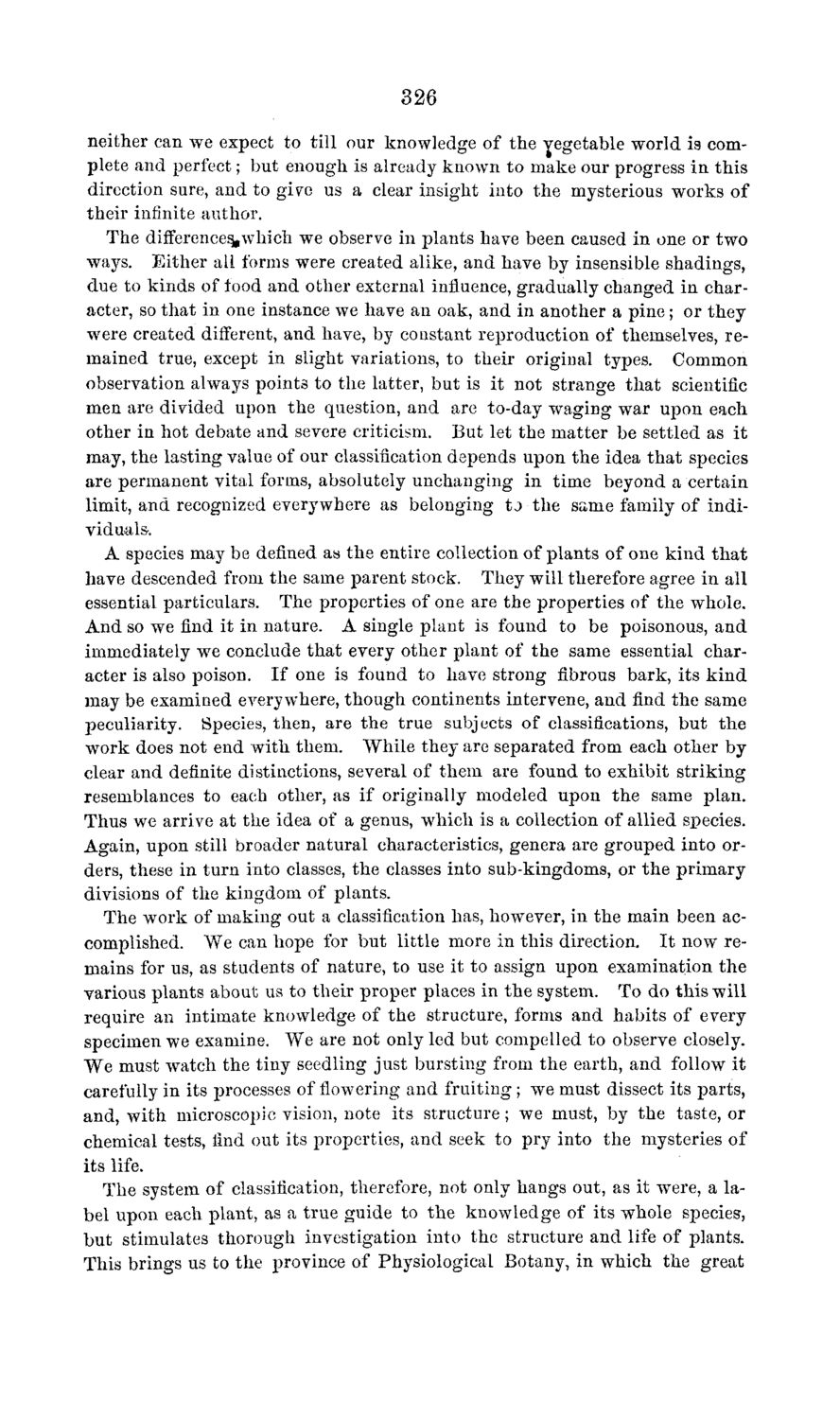| |
| |
Caption: Board of Trustees Minutes - 1869
This is a reduced-resolution page image for fast online browsing.

EXTRACTED TEXT FROM PAGE:
326 neither can we expect to till our knowledge of the vegetable world is complete and perfect; but enough is already known to make our progress in this direction sure, and to give us a clear insight into the mysterious works of their infinite author. The differences*which we observe in plants have been caused in one or two ways. Either all forms were created alike, and have by insensible shadings, due to kinds of food and other external influence, gradually changed in character, so that in one instance we have an oak, and in another a p i n e ; or they were created different, and have, by constant reproduction of themselves, remained true, except in slight variations, to their original types. Common observation always points to the latter, but is it not strange that scientific men are divided upon the question, and are to-day waging war upon each other in hot debate and severe criticism. But let the matter be settled as it may, the lasting value of our classification depends upon the idea that species are permanent vital forms, absolutely unchanging in time beyond a certain limit, and recognized everywhere as belonging t J the same family of individuals-. A species may be defined as the entire collection of plants of one kind t h a t have descended from the same parent stock. They will therefore agree in all essential particulars. The properties of one are the properties of the whole. And so we find it in nature. A single plant is found to be poisonous, and immediately we conclude that every other plant of the same essential character is also poison. If one is found to have strong fibrous bark, its k i n d may be examined everywhere, though continents intervene, and find the same peculiarity. Species, then, are the true subjects of classifications, but the work does not end with them. While they are separated from each other by clear and definite distinctions, several of them are found to exhibit striking resemblances to each other, as if originally modeled upon the same plan. Thus we arrive at the idea of a genus, which is a collection of allied species. Again, upon still broader natural characteristics, genera are grouped into orders, these in turn into classes, the classes into sub-kingdoms, or t h e primary divisions of the kingdom of plants. The work of making out a classification has, however, in the main been accomplished. We can hope for but little more in this direction. I t now remains for us, as students of nature, to use it to assign upon examination the various plants about us to their proper places in the system. To do this will require an intimate knowledge of the structure, forms and habits of every specimen we examine. We are not only led but compelled to observe closely. We must watch the tiny seedling just bursting from the earth, and follow it carefully in its processes of flowering and fruiting; we must dissect its parts, and, with microscopic vision, note its structure; we must, by the taste, or chemical tests, find out its properties, and seek to pry into the mysteries of its life. The system of classification, therefore, not only hangs out, as it were, a label upon each plant, as a true guide to the knowledge of its whole species-, but stimulates thorough investigation into the structure and life of plants. This brings us to the province of Physiological Botany, in which the great
| |